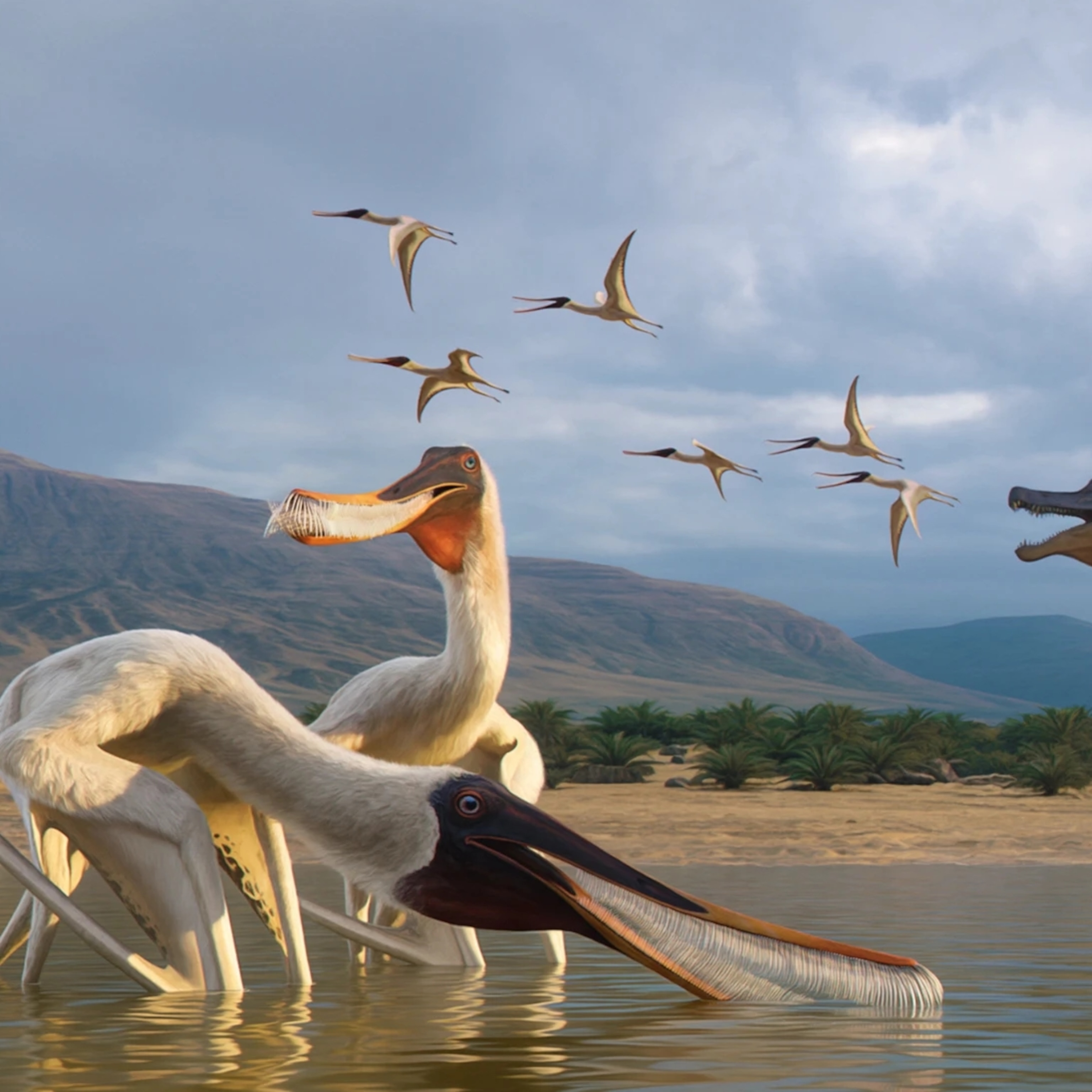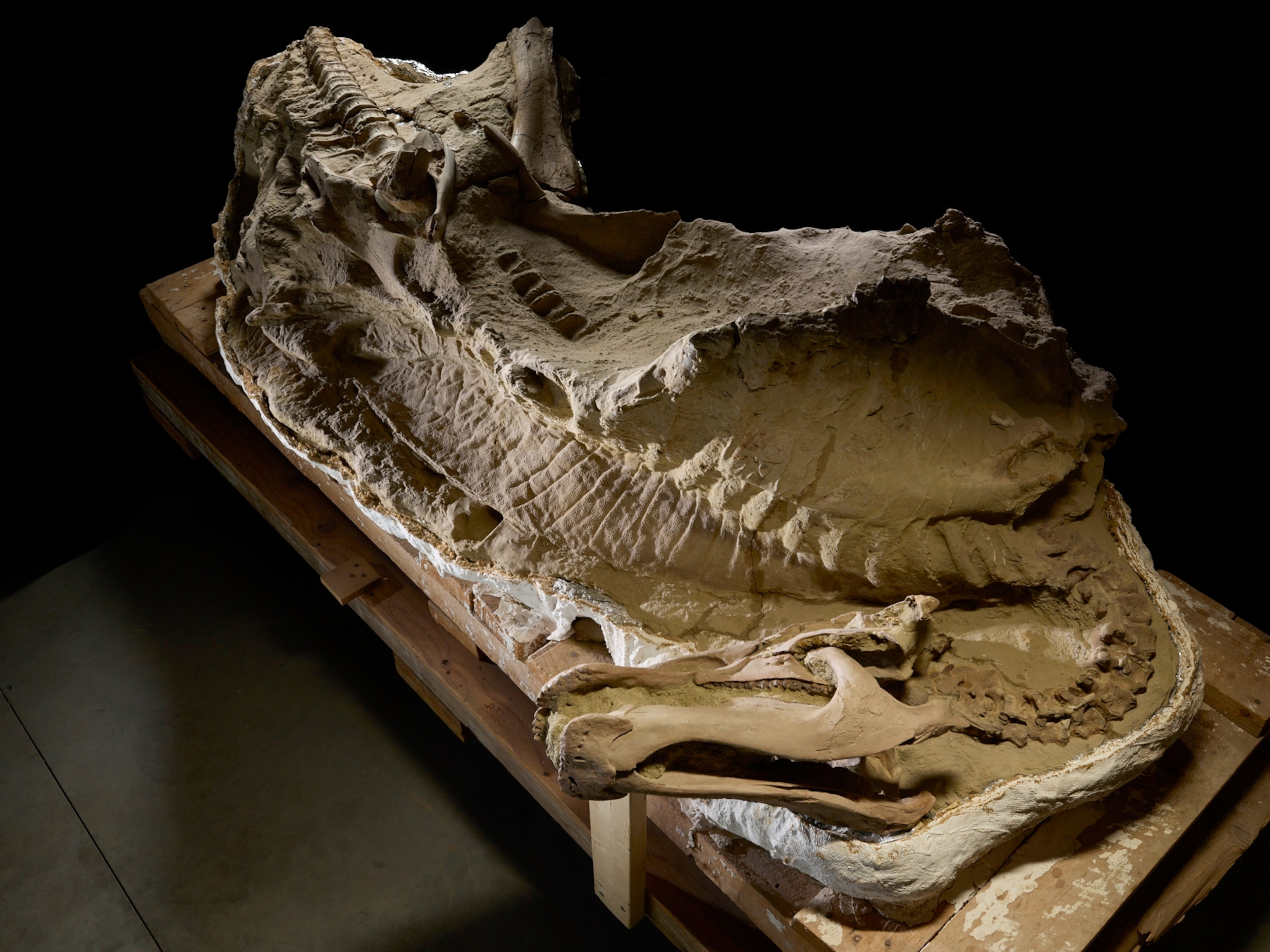The medieval Georgian village of Dmanisi is a mecca for paleoanthropology. It holds the oldest known records of human ancestors outside of Africa, shedding light on how the hominin Homo erectus lived at the crossroads of Europe and Asia roughly 1.8 million years ago.
Based on newly unearthed remains, it now seems that Dmanisi’s hominins crossed paths in the Caucasus with a four-legged traveler from the east: an enormous—and particularly social—wild dog with teeth built to slice up meat.
The remains belong to Canis (Xenocyon) lycaonoides, or the Eurasian hunting dog, which probably first evolved in East Asia around 1.8 million years ago and died out about 800,000 years ago. Based on the bone fragments found in Dmanisi—some teeth and bits of a jawbone—the ancient dog weighed some 66 pounds when it died, likely in young adulthood.
The study authors contend that the Dmanisi remains are the oldest fossils of C. (Xenocyon) lycaonoides yet identified. Some researchers, including the study’s coauthors, also argue that C. (Xenocyon) lycaonoides could be closely related to today’s modern African wild dog, Lycaon pictus. If so, the new fossil is the first of that specific lineage ever found at Dmanisi.
To be clear, the discovery in no way suggests that humans and dogs cooperated at Dmanisi nearly two million years ago. The earliest evidence for any sort of canine domestication goes back no farther than 40,000 years ago. Instead, the find, described today in the journal Scientific Reports, should add crucial detail to what is currently a very messy picture of dog evolution.
A wide-ranging dog
Canis (Xenocyon) lycaonoides remains have previously turned up in Siberia, Spain, and even South Africa. Considering its broad geographical range, the absence of the Eurasian hunting dog or its immediate relatives at Dmanisi had irked researchers. The site’s fossil-rich sediments have yielded remains of more than two dozen different mammal species that lived alongside our human ancestors, including hyenas, bears, cheetahs, and saber-tooth cats, as well as some distant relatives of today’s wolves and dogs.
“It was very, very, very strange—very weird—that Lycaon was not present at Dmanisi, after more than 30 years of excavation,” says study coauthor Bienvenido Martínez Navarro, a paleontologist at Spain’s Catalan Institution for Research and Advanced Studies. “Finally, it appeared! We were lucky.”
Even with new evidence in hand, sorting out where specific dog-like carnivores (canids) belong on the group’s family tree is “absolutely mind-blowing” in its difficulty, says lead study author Saverio Bartolini Lucenti, a paleontologist at Italy’s University of Florence.
As a group, canids have been fairly conservative in their evolution, showing less morphological flair than felids such as the saber-tooth cats. Adding to the confusion, distantly related lineages of canids sometimes evolved to bear similar physical features, making it difficult to see relatedness from bones and teeth alone.
Bartolini Lucenti and his colleagues still don’t know whether the Dmanisi dog belongs in the genus Canis alongside modern wolves and domesticated dogs, or within the separate genus Xenocyon. That’s why the team opted for the designation of Canis (Xenocyon), leaving room for the possibility that the dog could belong to either genus.
The agnostic label may look funny, but the caution is warranted. Earlier this year, researchers found that the extinct dire wolf—long thought to be a sister species to modern wolves—didn’t belong in the genus Canis at all. (Read more about the real dire wolves.)
The team can be reasonably sure of the dog’s diet. Researchers compared the ancient tooth measurements against those of other canid chompers to test how much meat the dog likely ate. Its teeth proportions clustered alongside the “hyper-carnivores”: living and extinct canids, including today’s African wild dog, whose diets were at least 70 percent meat.
Social animals
The study also highlights intriguing parallels between C. (Xenocyon) lycaonoides and H. erectus. Both managed to spread out across multiple continents—H. erectus evolving in Africa and moving eastward into the islands of Southeast Asia; the Eurasian hunting dog likely evolving in Asia and moving westward into Europe and Africa.
Both were highly social—even altruistic—mammals, the researchers argue. But how can researchers intuit dog behavior from fossil bones more than a million years after the fact? One crucial line of evidence for altruism comes in the form of skulls with clear pathologies—such as missing teeth and deformed jaws—that would have made it nearly impossible for an individual animal to feed itself. If that animal clearly lived well after its pathologies formed, scientists reason, it must have had help getting food from others.
A site in Spain preserves such evidence for C. (Xenocyon) lycaonoides, in the form of an asymmetric skull with several tooth defects, including a missing canine tooth. The dog appears to have lived for seven or eight years, suggesting it was assisted in obtaining food by fellow pack hunters.
(Dmanisi itself provides similar evidence for food-sharing among H. erectus: The skull of an elderly hominin shows the individual died years after losing all but one of their teeth.)
Science also shows that when a canid species’ average body mass exceeds about 47 pounds, caloric math demands that the species take down prey animals that are even larger, a task that favors cooperative pack hunting. Skull and tooth measurements from Dmanisi and elsewhere suggest that C. (Xenocyon) lycaonoides was well past the pack-hunting threshold.
However, there’s no direct evidence that Eurasian hunting dogs were social within Dmanisi. “In modern-day carnivores, sociality can vary even within a species,” says paleontologist Mairin Balisi, a postdoctoral research fellow at California’s La Brea Tar Pits and Museum who wasn’t involved with the study. “I am sure that it could vary also in the fossil record, but then it’s just tougher to establish that variation.”
Future fossils at Dmanisi should help confirm the dog’s sociality there—and new kinds of molecular evidence could potentially confirm how the Eurasian hunting dog fits onto the canid family tree. In 2019, researchers managed to extract and sequence proteins from a Dmanisi rhino tooth. Bartolini Lucenti says that his team tried to get ancient proteins out of the new dog remains too, but they weren’t successful.
Balisi, for one, is excited to see what the future holds for unraveling dogs’ complex evolutionary history. “The more pieces of the puzzles we can get, the better,” she says.
.jpg)








